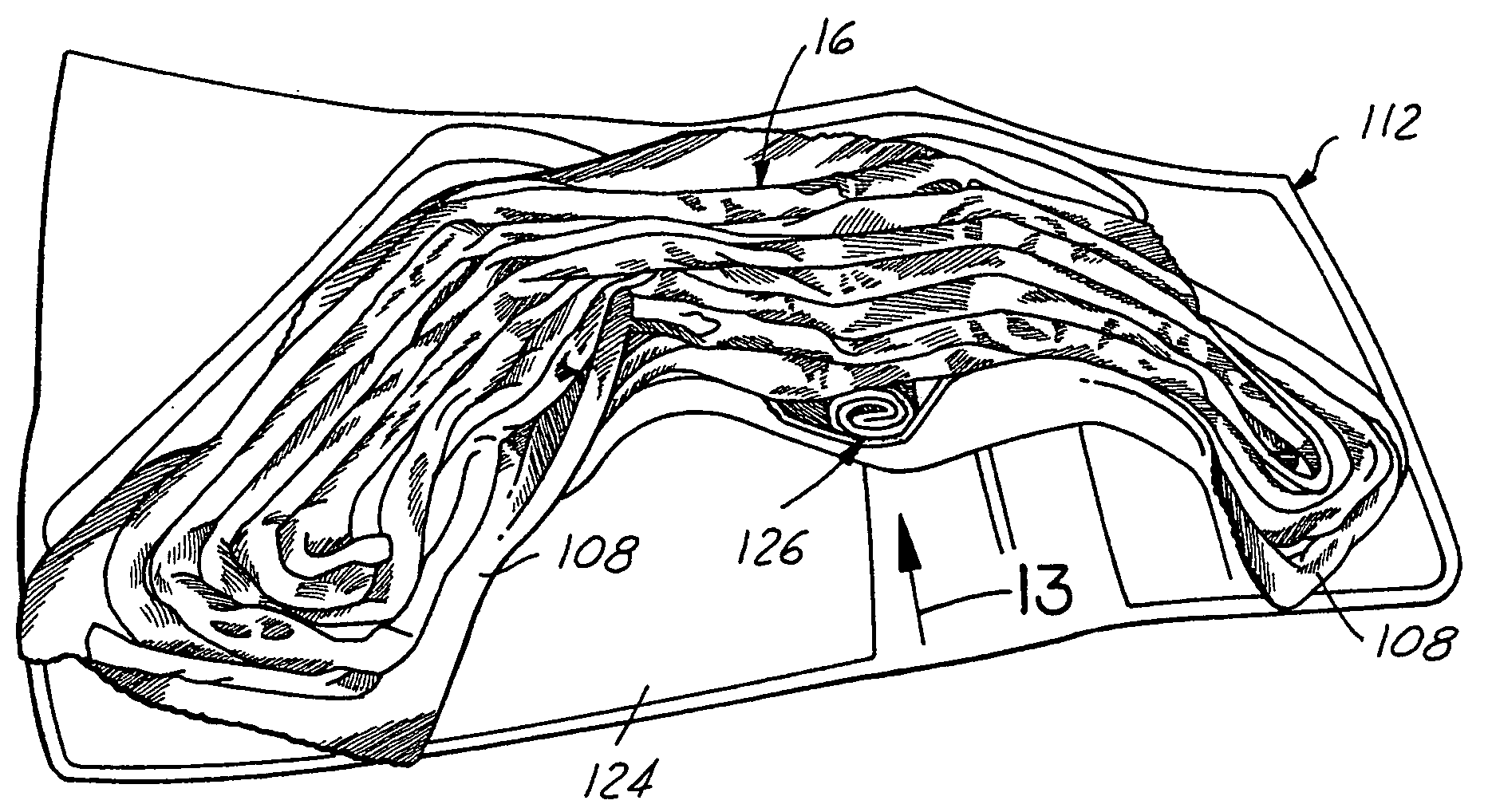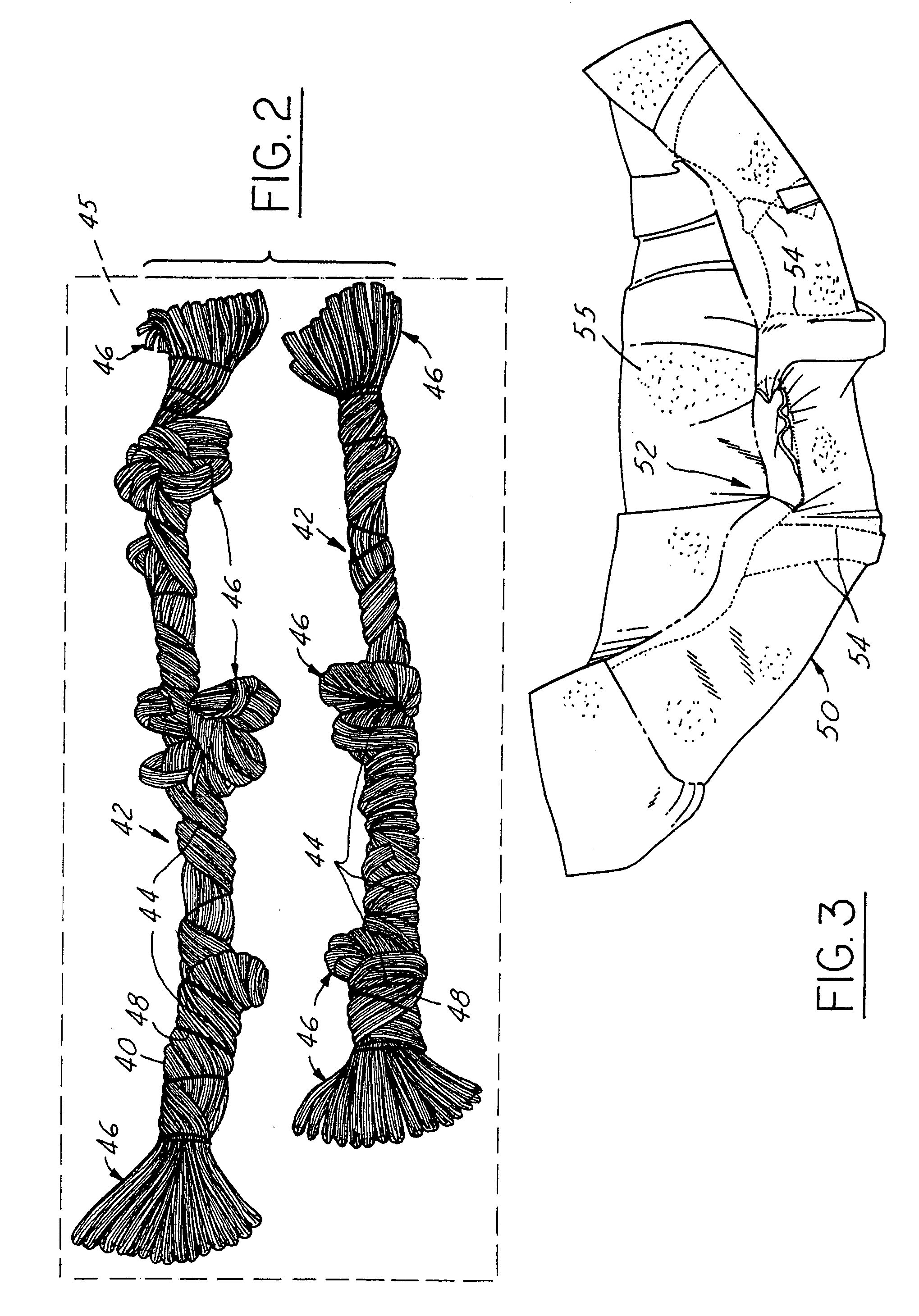Method of making a composite riser
a composite riser and composite technology, applied in the field of archery bows, can solve the problems of weak spots or voids in the riser, failure of the riser by cracking or other fracture, and failure of the riser by “dry firing” of a poorly formed polymeric riser, etc., to eliminate dry fibers, eliminate resin rich areas, and eliminate dry fibers
- Summary
- Abstract
- Description
- Claims
- Application Information
AI Technical Summary
Benefits of technology
Problems solved by technology
Method used
Image
Examples
Embodiment Construction
[0021]Referring in more detail to the drawings, FIG. 1 illustrates an archery bow 10 according to the present invention having a composite riser 12 with a handle portion 14 grippable by the user or archer. A pair of limbs 16, 18 are each connected to opposite ends of the riser 12 and extend away from the riser 12 providing free ends 20, 22, respectively, which may carry a cam 24, idler wheel 26 or the like. One or more strings 28 are connected to the bow limbs, and / or trained around the cam and idler wheel to interconnect the cam 24 and idler wheel 26 and provide a drawstring to be received in the nock of an arrow and drawn away from the riser 12 by a user to flex the limbs 16, 18 and store energy in the bow 10. Release of the drawstring releases the energy stored in the bow 10, returns the limbs 16, 18 to their unflexed position and propels the arrow forward.
[0022]The riser 12 has a pair of generally flat, planar ends 30, 32 to which pockets 34, 36 may be attached. The pockets 34, ...
PUM
| Property | Measurement | Unit |
|---|---|---|
| temperature | aaaaa | aaaaa |
| pressure | aaaaa | aaaaa |
| temperature | aaaaa | aaaaa |
Abstract
Description
Claims
Application Information
 Login to View More
Login to View More - R&D
- Intellectual Property
- Life Sciences
- Materials
- Tech Scout
- Unparalleled Data Quality
- Higher Quality Content
- 60% Fewer Hallucinations
Browse by: Latest US Patents, China's latest patents, Technical Efficacy Thesaurus, Application Domain, Technology Topic, Popular Technical Reports.
© 2025 PatSnap. All rights reserved.Legal|Privacy policy|Modern Slavery Act Transparency Statement|Sitemap|About US| Contact US: help@patsnap.com



